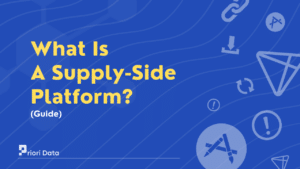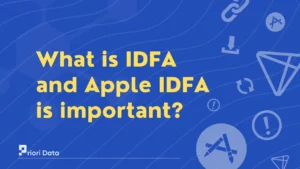An ad exchange is a technology platform that facilitates the buying and selling of online advertising inventory from multiple ad networks. It provides an efficient marketplace where publishers and advertisers can buy and sell ad space.
The main function of an ad exchange is to match publishers who want to monetize their ad inventory with advertisers who want to buy ad space to promote their products or services.
What does an Ad exchange do?
Here are some key things an ad exchange does:
- Brings together many ad networks and DSPs (demand-side platforms): The ad exchange connects with multiple ad networks that represent publishers and DSPs that represent advertisers. This allows for a vast marketplace of inventory and demand.
- Holds real-time auctions for online ad impressions: When a user visits a website, the publisher’s ad space is auctioned off in real-time by the ad exchange. Advertisers bid for the opportunity to serve ads to that user based on the value of the user.
- Facilitates bidding and pricing models: The ad exchange provides different pricing models like Cost Per Mile (CPM), Cost Per Click (CPC), and Cost Per Action (CPA) to make the buying process flexible.
- Matches ads to publisher inventory: The ad exchange uses data and algorithms to match advertiser demand with publisher supply. Relevant ads are displayed on websites.
- Provides targeting capabilities: The ad exchange collects data and leverages tools like behavioral, geographic, and demographic targeting to identify consumers based on intent and interests.
- Optimizes campaign performance: With volumes of data and analytics, the ad exchange can optimize ad campaigns to help advertisers get better conversion rates and return on investment.
- Offers transparency and reporting: Publishers and advertisers get access to real-time reporting on ad inventory, ads served, clicks, conversions, and other important metrics through the ad exchange.
The ad exchange essentially serves as a streamlined, transparent platform that makes display advertising more efficient and automated for both publishers and advertisers.
What is the benefit of using an ad exchange?
For publishers, ad exchanges provide the following benefits:
- Access to larger advertiser base and demand: An ad exchange opens up publishers to a vast pool of advertisers from different networks and DSPs. This demand competition helps publishers monetize all their inventory.
- Efficient monetization: Real-time bidding allows publishers to dynamically allocate ad inventory to the highest bidders: This optimized auction process results in higher revenues.
- Reduced unsold inventory: With the wide advertiser reach, publishers can monetize and sell remnant inventory that would otherwise go unsold.
- Transparency & Control: Publishers get more transparency into advertiser demand and pricing for their ad inventory. They have some control over setting floor prices.
- Competition reduces reliance: More competition reduces dependency on just a few networks. Publishers have alternatives to choose from for better terms.
For advertisers, the benefits include:
- Access to broader audience reach: Ad exchanges provide a single point of access to multi-publisher ad inventory. This allows advertisers to achieve a greater audience scale.
- Targeting capabilities: The ability to leverage various data signals for audience targeting makes ad spending more efficient.
- More control over buying: Advertisers can control bidding strategies and dynamically buy impressions that align with their goals.
- Competition lowers prices: Ad impressions generally get sold to the highest bidder in an automated fashion. More competition forces down the clearing prices.
- Transparency in buying: Ad exchanges offer campaign performance transparency for optimization and accountability in ad spending.
The enhanced visibility, efficiency, targeting, automation, and lower prices enabled by ad exchanges create advantages for both publishers and advertisers.
What is the difference between an ad exchange and an ad network?
The main differences are:
- Scope of inventory: An ad exchange aggregates ad inventory from many publishers and networks. Ad network represents inventory from owned and operated sites or select publishers.
- Buying mechanism: Ad exchanges use real-time bidding for impression-level buying based on the value of each user. Ad networks mostly sell ad inventory in bulk packages to advertisers upfront.
- Pricing models: Ad exchange pricing is highly dynamic driven by the demand and goals of an advertiser for each impression. Ad networks have fixed rate cards and packages for advertisers.
- Targeting: Ad exchanges offer advanced targeting capabilities using first, second, and third-party data. Ad network targeting tends to be basic like contextual and geographic.
- Transparency: Ad exchanges provide more transparency into impression-level costs, target segments, and campaign performance analytics for optimization. Ad networks give high-level performance data.
- Technology: Ad exchanges operate a highly automated self-serve platform with APIs, real-time bidding, and advanced algorithms. Ad network tech is less real-time and automated.
- Control: Ad exchanges give more control to advertisers for precise impression-level buying. Ad networks control ad inventory sourcing and pricing.
In essence, ad exchanges offer a more optimized programmatic way of buying and selling ad inventory vs. the traditional ad network model.
Types of ad exchanges
- Display ad exchanges: Facilitates the buying and selling of display banner ad impressions on websites and apps. Some top display ad exchanges are Google AdX, AppNexus, and Rubicon Project.
- Mobile ad exchanges: Specializes in selling ad inventory from mobile sites and apps. Top mobile ad exchanges include MoPub, MobFox, and Smaato.
- Video ad exchanges: Focuses on transacting video ad impressions from publishers. Example: SpotX.
- Search ad exchanges: Enables trading of search engine marketing ads. Example: Bing Ads exchange.
- Social media ad exchanges – Monetizes social media advertising inventory like Facebook and Twitter. Example: Facebook Ad Exchange.
- Private ad exchanges: Runs exclusive marketplace of impressions from select publishers for specific advertisers.
- Open ad exchanges: Provides an open marketplace for thousands of publishers and advertisers in an impartial manner.
The different types of ad exchanges allow advertisers to buy ad inventory relevant to their needs and campaigns on an automated platform that leverages real-time bidding and data for targeting.
F.A.Q
Q1: What is an ad exchange and how does it work?
A1: An ad exchange is a platform that connects publishers and advertisers to buy and sell ad space through real-time auctions.
Q2: What is an ad exchange example?
A2: Examples of ad exchanges include Google AdX, AppNexus, and Rubicon Project.
Q3: Can I earn money from ads exchange?
A3: Yes, publishers can earn money by selling their ad inventory through an ad exchange.
Q4: Is Facebook an ad exchange?
A4: No, Facebook is not an ad exchange but a publisher selling ad space directly.
Q5: Is Google an ad exchange?
A5: Yes, Google operates the ad exchange Google AdX.






